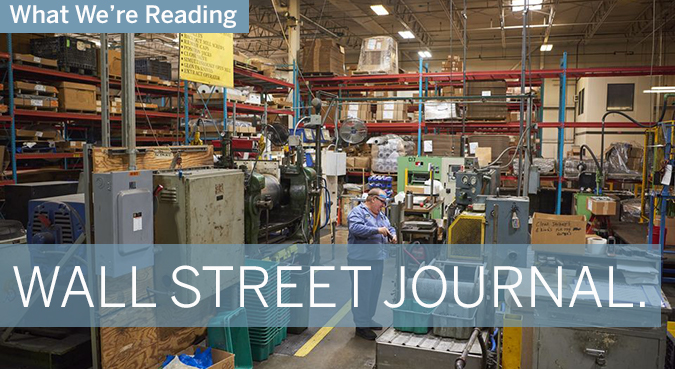
An Ohio Factory’s Test: Will Higher Wages Help More Than They Hurt?
Wall Street Journal, 8.6.21 – Charlie Braun long wondered whether paying higher wages would ease staffing shortages at his rubber parts factory, or simply push it into financial trouble. The Covid-19 pandemic provided a rare opportunity to experiment.
With an $879,000 forgivable loan from the federal Paycheck Protection Program as a cushion, Mr. Braun raised wages for some employees three times this year. Starting pay for machine operators, the toughest position to fill, jumped by $4.55 to $18.25 an hour, and to $19 for the night shift.
The early signs appear favorable, if initially bumpy. Custom Rubber Corp.’s head count climbed to 124 in July from 91 at the end of January. Profit margins hovered between 5% and 6% in recent months, roughly double the 3% the company had come to expect in a good year.
Labor costs, including taxes and benefits, now account for about 17% of sales, up from 12% eight years ago. But the extra labor has helped CRC to fill more orders, and sales rose nearly 50% in the first seven months of 2021 versus a year earlier. That allowed better use of equipment and other fixed assets—to a degree that surprised Mr. Braun.
The higher margins are good for him, and employees also benefit through the company’s profit-sharing plan. Eligible employees received $355 in the second quarter of this year, the most the company has paid since 2012.
Mr. Braun, CRC’s president for more than a decade, said the pay raise isn’t a panacea. It can lead to wage compression across the company—when pay for new hires and entry-level positions approaches that of longtime staff—and hard feelings among employees who labored for years at a lower rate. High turnover remains a drag: In July, CRC hired 21 people and lost 13. Because of the time it takes for workers to get good at their jobs, it could take another year to determine whether higher pay reduces waste and boosts output. A drop in sales could be particularly painful given the higher labor costs, he said.
Read the full article here.



